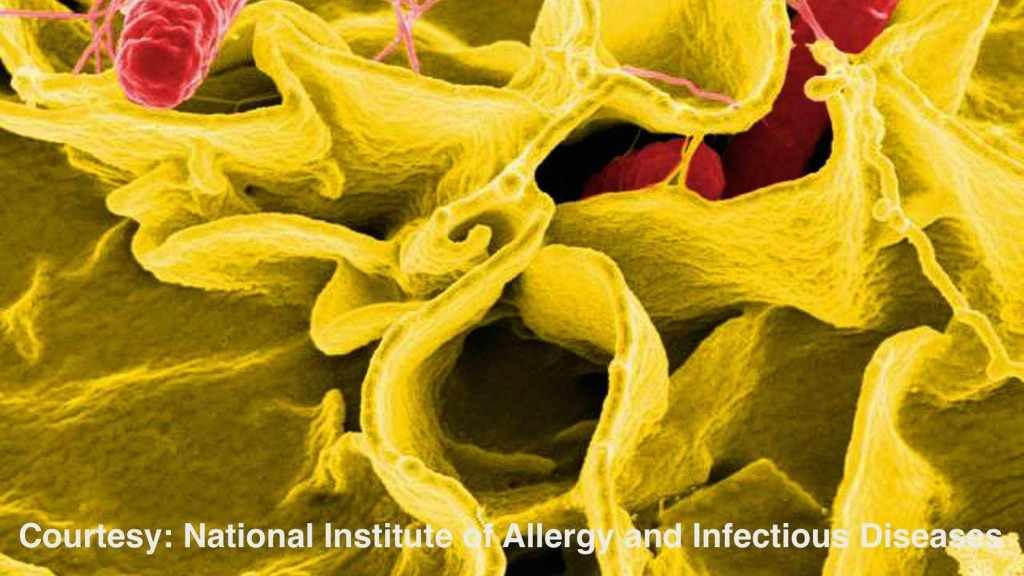
A fast-growing salmonella outbreak has health officials looking for the source. The Centers for Disease Control and Prevention (CDC) says they have not yet identified the specific food responsible for outbreaks in at least 29 states. If you have symptoms of a salmonella infection, the CDC asks that you talk to your health care provider and report your illness to your health department to help investigators solve this outbreak.
Salmonella infection, or salmonellosis, is a common bacterial disease that affects the intestinal tract. Salmonella bacteria typically live in animal and human intestines, and are shed through feces. Humans become infected most frequently through contaminated water or food.
Typically, people with salmonella infection have no symptoms. Others develop diarrhea, fever and abdominal cramps within eight to 72 hours. Most healthy people recover within a few days without specific treatment.
"Salmonella infection can cause a variety of symptoms. Most commonly, it causes some abdominal pain, nausea and diarrhea," says Dr. Nipunie Rajapakse, a Mayo Clinic pediatric infectious diseases physician. "However, people who have weakened immune systems, young children, pregnant women or people who have other issues with their digestive system may have more severe symptoms."
Watch: Dr. Nipunie Rajapakse explains salmonella infection.
Journalists: Sound bites with Dr. Nipunie Rajapakse are in the downloads at the end of the post. Please courtesy: "Nipunie Rajapakse, M.D. / Pediatric Infectious Diseases/ Mayo Clinic."
In some cases, diarrhea associated with salmonella infection can be so dehydrating as to require prompt medical attention. Life-threatening complications also can develop if the infection spreads beyond your intestines. Your risk of acquiring salmonella infection is higher if you travel to countries with poor sanitation.
Symptoms of salmonella
Most salmonella infections can be classified as stomach flu, or gastroenteritis. The incubation period ranges from several hours to two days.
Possible signs and symptoms of salmonella include:
- Nausea.
- Vomiting.
- Abdominal cramps.
- Diarrhea.
- Fever.
- Chills.
- Headache.
- Blood in the stool.
Signs and symptoms of salmonella infection generally last two to seven days. Diarrhea can last up to 10 days, although it may take several months before bowels return to normal.
A few varieties of salmonella bacteria result in typhoid fever, a sometimes deadly disease that is more common in developing countries.
Causes of salmonella
Salmonella bacteria live in the intestines of people, animals and birds. Most people are infected with salmonella by eating foods that have been contaminated by feces.
Commonly infected foods include:
- Raw meat, poultry and seafood
Feces may get onto raw meat and poultry during the butchering process. Seafood may be contaminated if harvested from contaminated water. - Raw eggs
While an egg's shell may seem to be a perfect barrier to contamination, some infected chickens produce eggs that contain salmonella before the shell is even formed. Raw eggs are used in homemade versions of mayonnaise and hollandaise sauce. - Fruits and vegetables
Some fresh produce, particularly imported varieties, may be hydrated in the field or washed during processing with water contaminated with salmonella. Contamination also can occur in the kitchen, when juices from raw meat and poultry come into contact with uncooked foods, such as salads.
The Food and Drug Administration also indicates that some salmonella outbreaks have been traced to contaminants in spices. The agency is seeking ways to increase the safety of spices.
Many foods become contaminated when prepared by people who don't wash their hands thoroughly after using the toilet or changing a diaper. Infection also can occur if you touch something that is contaminated, including pets ― especially birds and reptiles ― and then put your fingers in your mouth.
Read more about salmonella on mayoclinic.org.
For the safety of our patients, staff and visitors, Mayo Clinic has strict masking policies in place. Anyone shown without a mask was either recorded prior to COVID-19 or recorded in a nonpatient care area where social distancing and other safety protocols were followed.
Related Articles







